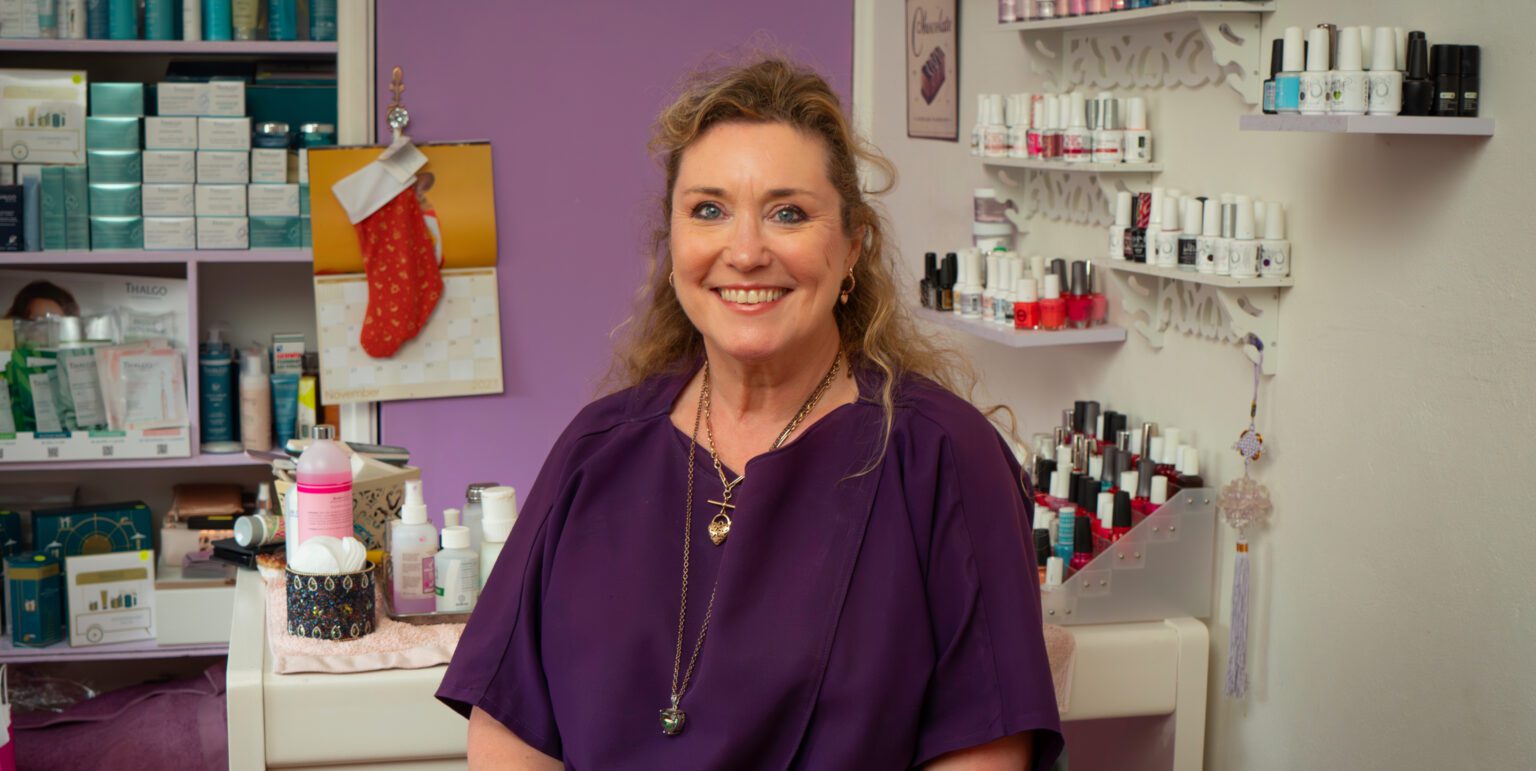Turn your salon into a legacy with advice from a 40-year industry veteran. John Azzi reveals his 5 pillars for success in finance, marketing, and team management.
At a glance
- After four decades at the top of the industry, legendary hairdresser John Azzi shares his foundational pillars for building a successful salon business.
- He advises building your business on the twin foundations of your own genuine passion and a team that is hired for its character and career vision, not just its CV.
- A salon's long-term success requires mastering the numbers with metrics like the 4x-wage-to-profit rule, while building a powerful brand on a foundation of exceptional service that makes location irrelevant.
Nearly 40 years ago, John Azzi left war-torn Beirut for Australian shores. With little English, a huge passion for his craft and an unstoppable drive, he opened his shop in one of Sydney city’s arcades. That single shop grew into a network of five salons and a training academy, earning him six national hairdresser awards and a place representing Australia on the world stage.
After four decades, John’s business is still at the top of an industry faced with persistent staff shortages, rising operating costs and a shift towards freelance work. In this article, John shares five foundational pillars for building a hairdressing business that lasts.
Lesson 1: Let passion be your compass
Ask John Azzi for his number one business secret and the answer is a simple word: passion.
That might sound like a cliché, but John’s business is built on a genuine love for the craft. He believes this passion connects with clients on a human level, turning a simple haircut into an experience that makes people look and feel good.
“Passion is the ultimate fuel,” John explains. “It’s the energy that gets you through the tough days and the compass that guides every business decision you make. People ask when I’m going to retire, but how can you retire from something you love? If you truly love what you do, you’ll never get sick of it”.
Lesson 2: Hire for attitude, train for skill
According to John, the pool of hairdressing talent has shrunk dramatically in recent years. Fewer young people are entering the trade, discouraged by the low starting pay, long hours and four-year training period required to become qualified. “With such a small talent pool, finding the right people has become the biggest challenge in the industry,” John says.
Much like his cutting style, John has developed his own hiring approach to win talent in such a competitive market. “I hire for a person’s character and potential, not just what’s on their CV. That’s because I’ve learned that you can train for technical skill, but you can’t teach attitude.”
During an interview, he looks past the resume for three key qualities:
- Professional appearance. A candidate’s presentation demonstrates their professionalism and respect for the craft.
- A clear vision. He looks for people who have a plan for their own career and a desire to grow.
- Genuine passion. He wants to understand their core motivation – are they there for the love of the craft or just for the pay and glamour?
John has had more success hiring someone with potential who he can train and mould into his business culture than an established hairdresser with an impressive portfolio but hard-to-shake-off habits.
Lesson 3: Master the numbers or you’re just running a hobby
According to John, there’s a hard truth the industry doesn’t want to face: many salons are “just working as a hobby”. He sees owners get so lost working on the floor that they don’t step back to look at the numbers. They have a busy week and see money come in, but by the time everyone is paid, “there’s nothing left”.
He advises owners to think like a coach and evaluate their business from the sideline. This means assessing every aspect of the business: calculating the value of every square metre of their salon, controlling stock levels to avoid tying up cash in products “full of dust”, and budgeting for everything, from the coffees all the way to the colours.
He believes the same logic should apply to employees, who are often a salon’s biggest expense. “Your staff are your biggest asset, but you need to be realistic about the numbers,” John stresses. “A hairdresser needs to generate four times their wage. If you calculate all their costs – super, holidays, sick days – you have to multiply their wage by four for the business to be profitable”.
And mastering the numbers isn’t a solo job. For John, building a successful business requires a strong external team, including a good accountant and a good lawyer in your corner.
Prospa tip: Even with careful budgeting, unexpected costs can leave you short. A business line of credit can act as a safety net, giving you ongoing access to funds for managing daily cash flow or paying staff, ensuring you’re never caught out.
Lesson 4: Build a brand people will follow
“Forget the old rule of ‘location, location, location’ — I’m so against it,” John says. “If your brand is strong enough and your work is good enough, people will follow you anywhere. If a customer wants Chanel, they will go to the Chanel store; they don’t just find it by walking past”.
He proved this theory by moving his salon from a high-foot-traffic shopping centre to an exclusive penthouse, a move many predicted would fail because of the reduced visibility. Instead, he built his brand and reputation to create demand without relying on walk-in traffic. In the past, that meant buying expensive ads in magazines like Vogue; today, he says, it’s about mastering your social media presence on platforms like Facebook and Instagram.
Building that brand requires a consistent effort. John recommends that owners develop a signature style so their work becomes instantly recognisable on social media, and stay visible in the industry by entering awards, participating in expos, and working with local celebrities.
Lesson 5: Service is more than a great haircut
For John, every single detail contributes to the client experience. It’s the way your team talks, dresses, and smiles. It’s the politeness in their attitude and the care they take in serving their coffee or drink.
“The technical work is only one part of the business,” John states. “Real success comes from the service, and that service has to come from the heart. From the moment a client walks in, your job is to make them feel comfortable and special… like a queen”.
When clients feel truly comfortable and cared for, they relax and open up, because a hairdresser is often also a confidante. This personal, premium service is what builds a loyal client base that stays with you for the long haul.
Building a salon that’s a cut above
To stay at the top for four decades means creating an experience where the customer is at the centre. From how staff dress and greet people, to how they serve the coffee and listen to a client’s needs or life confessions, it all needs to be about the customer.
“I’ve travelled the world for hairdressing,” John says, “and my philosophy has always been: believe in your trade, love what you do, and never stop trying to make people look and feel good. Everything else follows from that.”







